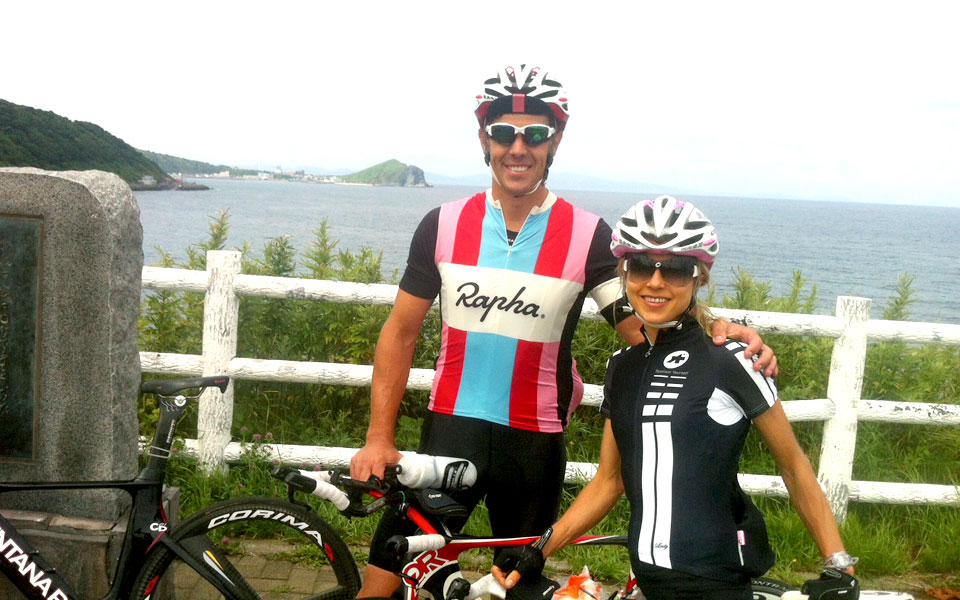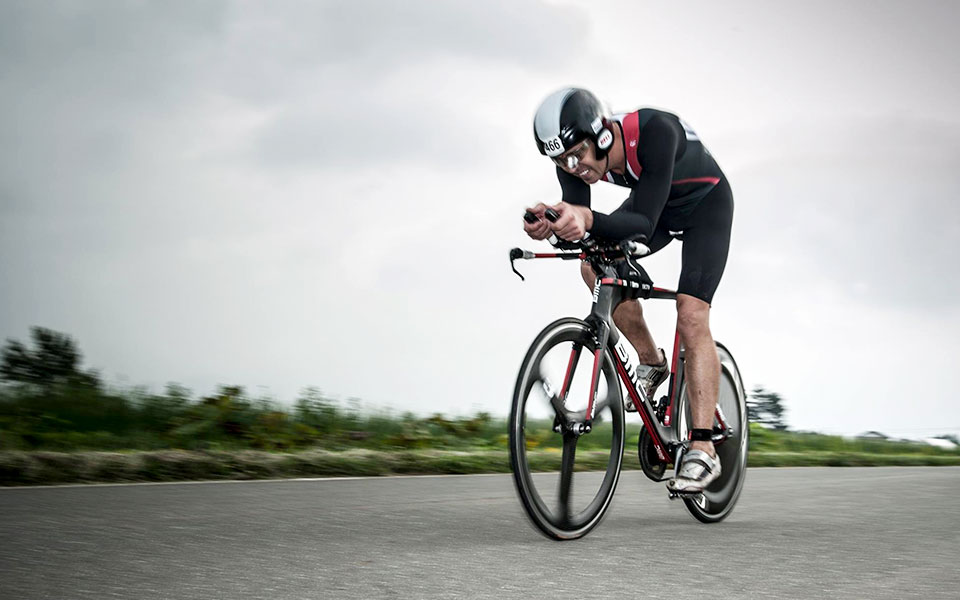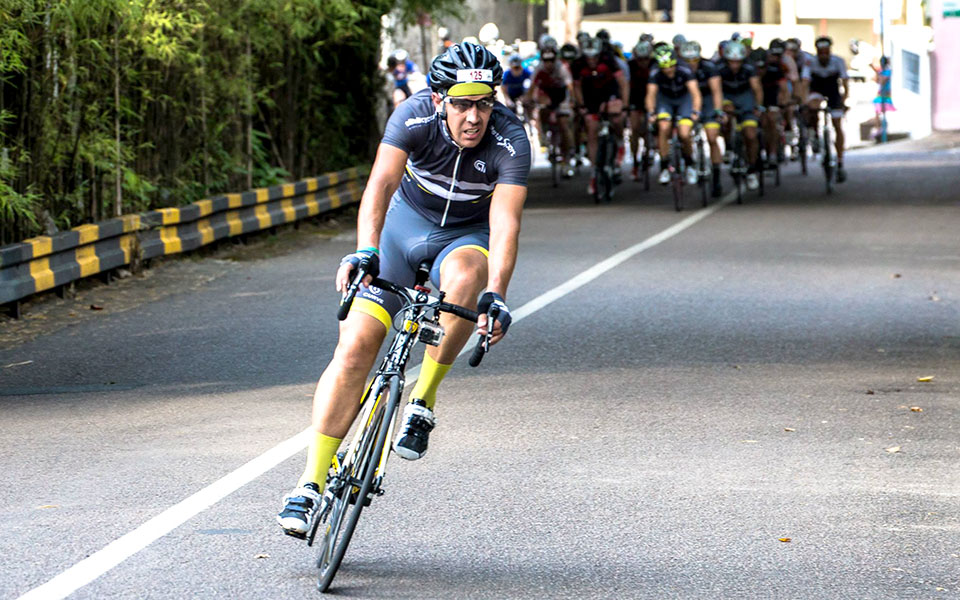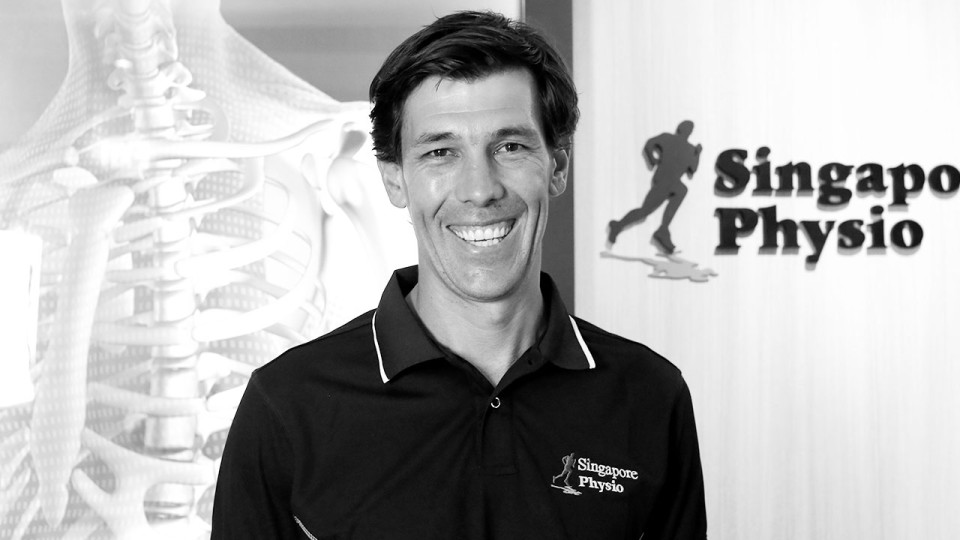Raise your hand if you love a good mystery! Readers have opportunities to consider the usual suspects, experience plenty of twists and turns and, of course, the culprit gets his or her comeuppance. But when the mystery involves running injuries, even talented storytellers can’t unravel painful twists and turns—and solutions aren’t always easy to uncover. That’s why Singapore runners count on physiotherapists like Bevan Colless to interpret clues and diagnose aches and pains. Colless uses his degrees in Sports Science and Applied Science to treat running-related injuries, and his personal passion for competing in triathlons makes him uniquely qualified to hand out advice. Bevan works and trains with his equally talented wife, Vanessa, and there’s no mystery behind their relationship or their shared passion for competing in events that push them both to their limits!
RS: Before we ask about your athletic pursuits and work, we’d love to know how you and Vanessa, also a health practitioner and triathlete, met!
Colless: We were together for a decade before I discovered triathlons. That doesn’t mean either of us were couch potatoes—I played soccer and rugby and Vanessa worked out at a gym. On a whim, I decided to step outside my comfort zone after playing in a Phuket soccer tournament by entering the Phuket triathlon. By the time I reached the finish line, I was hooked. The following year, I registered for Phuket again and I also signed Vanessa up without telling her. Imagine her surprise when the e-mail confirming her registration landed in her mailbox. I guess you could say that I recruited her!
RS: Both you and Vanessa are originally from Australia, but you’ve lived and worked in both Japan and Singapore. Is there a reason you keep relocating?
Colless: We left Australia for Japan in 2002 because Sydney’s physiotherapy community had gotten very crowded. We did some research and decided to pursue professional opportunities in Japan. To make the geographic transition an easy one, Vanessa and I put all of our stuff into a container and shipped it to Japan so we had everything we needed to open our clinic doors when we arrived. Amazingly, we found the perfect location just before that container arrived—it was a close call. We stayed in Japan for 10 years and just moved to Singapore in 2012, but our clinics are still open in Japan. Friends joke that we are building our own empire!

RS: As a triathlete, can we assume that you’ve had your fair share of injuries? Which were the worst?
Colless: Not only have I suffered injuries throughout my career, but they seem to occur in specific areas as I age. When I was young, most of my injuries were from the shin down. I developed Achilles tendon problems years later—until I began wearing lighter shoes that not only improved my running performance but resolved my tendon issues, too. I’ve suffered from calf muscle problems, but that has given me an excuse to tell patients that, as a typical middle-age guy, I suffer from “Mad Calf Disease”. Most recently, I’ve experienced lower back pain, so I am working hard at keeping my calves strong by doing 30, one-foot heel raises. Which were the worst injuries? At the time, each one of them!
RS: As a certified injury specialist, can you share with us the most common injuries you treat when marathoners and triathletes seek your professional help?
Colless: Marathoners and triathletes tend to suffer the same types of injuries, no matter their age or training and running levels. I treat a lot of patella-femoral knee injuries—sometimes called Runner’s Knee—Achilles and gluteal tendonopathy and calf muscle strains. Women are particularly vulnerable for gluteal tendonopathy. The list goes on and includes shin splints, stress fractures and cuboiditis. I could keep going…
RS: You treat athletes in many nations. Do their injuries vary from one country to the next?
Colless: That’s a fascinating question. I can only speak to my practice, but I’ve found that Japanese runners, who are brought up to choose light shoes for their running activities, get fewer injuries. From my experience, these runners have a very high cadence, so their lower limbs are more resilient upon impact.
RS: When you compare injury rates between Singapore runners and Japanese and Australian runners, what do you find?
Colless: Australians—indeed most westerners—tend to weigh more and since they aren’t muscular and trim, and they usually wear big, bulky shoes, they develop more lower limb injuries. Singapore runners tend not to have been given a well-rounded, sports-focused education in childhood. As a result, when they take up running, they suffer lots of knee and foot injuries.
RS: In the past, people just put on their shoes and ran without benefit of today’s assessment and technology advancements. Do you think today’s runner should adopt all of these technological advancements?
Colless: I own plenty of gadgets, but I also believe that we’ve got too much technology inserted into the sport of running these days! Everything is about marketing and trends; gear and product manufacturers try to sell runners lots of things they don’t need, but we love our innovations, so we succumb to the lure. Does a runner need a high-tech, Motion Control 2000 shoe? Of course not—and sophisticated running shoes that promise an injury-free experience can even cause injuries. I worry that fancy run watches, supplements and gear are being bought for the wrong reasons. They have their place, but why not just throw on cheap running shoes, go for a run and have fun?
RS: In your professional opinion, is there any way to avoid 100-percent of all running injuries?
Colless: There is no way to prevent all running injuries, and anybody who says that they’ve got a method for doing so is likely a con artist. Preventing injury and reducing the number of injuries requires discipline, preparation and wisdom. Advice I give on this subject is this: To prevent and reduce your propensity for injuries, increase your distance and intensity gradually and give careful thought and planning to your conditioning programs.
RS: Is it true that you’re training for an ironman distance triathlon?
Colless: It is true, and I like to caution runners about jumping into an ironman before they’re ready. Some athletes want to tick off the box and sign up for a full ironman before they develop sufficiently to undertake so daunting an event. Vanessa and I did triathlons for three years before we attempted an ironman. These days, we work with a coach who designs our conditioning programs and gives us feedback. His guidance is priceless.

RS: Have you run a race that you would consider “unforgettable”?
Colless: The first event that comes to mind is the Ironman Canada held in Whistler in 2012. There were 2,500 starters, but I had a great day and found myself the overall leading amateur 150km into the bicycle leg. I wound up getting the slot with time to spare! The last kilometre of the run was daunting because I became so emotional. I should also add that the 2012 Bintan Triathlon was unforgettable because I was leading the pack with only 1km to go when I passed out from heat exhaustion!
RS: As a runner and a physiotherapist, what advice do you give to first-time triathlon competitors?
Colless: Just sign up and go for it! Choose an Olympic distance event and make sure your freestyle swimming skills are the best they can be. You might be able to fudge your way through biking and running portions of a triathlon, but if you can’t swim the race distance freestyle, in my opinion, you shouldn’t queue at the start line.
RS: As someone familiar with Australian, Japanese and Singaporean running scenes, have you noticed a trend toward more triathlons in Asia? Any idea why?
Colless: I have noticed the rapid growth of triathlons and I think this has come about because people are getting wealthier so they have the time and money necessary to focus on health and fitness. Once they get serious, many view a triathlon as the ultimate physical challenge. In Singapore, Thailand, the Philippines and other nations in our region, such events are selling out fast because runners and spectators are fascinated by this exciting sport! I believe this trend will continue to grow.

RS: We’re eager to hear about your future plans and goals—what’s on your radar?
Colless: I have an ambitious year ahead. My biggest goal is to go under 10 and close to 9.30 at Kona this October. I also plan to participate in the 70.3 in Vietnam, Bintan triathlon, Cebu 70.3, 70.3 Worlds in Zell Am See, Laguna Phuket and some bike races, including the Tour De Bintan. Oh, and one of my major goals, as always, is to enjoy every minute of each experience and have fun!
Bevan Colless is a man of the world whose career and personal interests revolve around extreme sports, yet he’s also a funny, smart, clever man with a big heart committed to helping athletes in many nations stay as injury-free as possible. What did you learn about your favourite athletic pursuit from Bevan that heretofore you knew nothing about? Did his advice convince you to move out of your comfort zone and consider a triathlon?
Bevan and his wife Vanessa together with a team of therapists at Singapore Physio specialise in endurance sports, knee injuries, back and neck pain, headaches, women’s health and post-operative rehabilitation.




